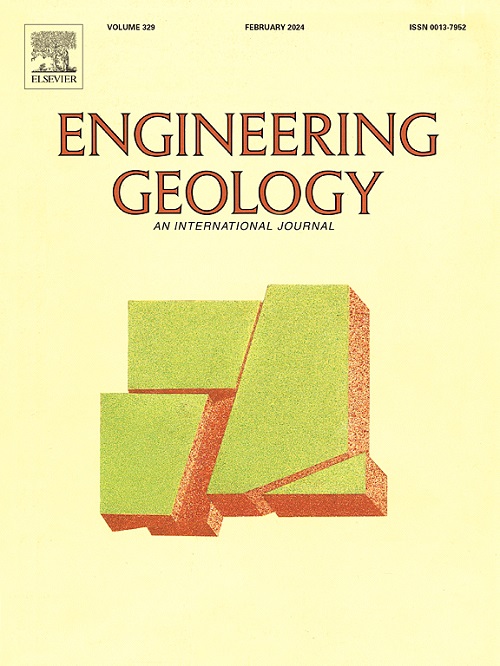Model test study of soil grouting effect on shield tunnel longitudinal structural behavior
IF 6.9
1区 工程技术
Q1 ENGINEERING, GEOLOGICAL
引用次数: 0
Abstract
Soil grouting has been widely applied in many shield tunnel settlement rehabilitation projects worldwide. However, the effectiveness of grouting on tunnel longitudinal performance largely relies on experience and field detection. In this study, a self-designed grouting model system was used to conduct a series of tests investigating soil and structural behaviors during grouting. Various grouting parameters, including burial depth, grouting volume and times, and grouting pressure, were analyzed to assess their impact on tunnel mechanical deformation. Results indicate that slurry diffusion in sand involves both compaction and fracture mechanisms, and the compaction of the surrounding soil diminishes along the expansion direction of the slurry vein. Reducing burial depth, increasing grouting volume and pressure, and employing continuous grouting all can enhance the effectiveness of settlement reduction. However, these reductions in settlement are often associated with adverse circumferential joint deformations, particularly joint dislocation. Multiple discontinuous grouting and shallow buried strata would introduce more disturbances, causing greater variation in joint deformation and more significant dissipation of additional stress after grouting. These findings provide valuable references for optimizing grouting practices in similar engineering applications.
求助全文
约1分钟内获得全文
求助全文
来源期刊

Engineering Geology
地学-地球科学综合
CiteScore
13.70
自引率
12.20%
发文量
327
审稿时长
5.6 months
期刊介绍:
Engineering Geology, an international interdisciplinary journal, serves as a bridge between earth sciences and engineering, focusing on geological and geotechnical engineering. It welcomes studies with relevance to engineering, environmental concerns, and safety, catering to engineering geologists with backgrounds in geology or civil/mining engineering. Topics include applied geomorphology, structural geology, geophysics, geochemistry, environmental geology, hydrogeology, land use planning, natural hazards, remote sensing, soil and rock mechanics, and applied geotechnical engineering. The journal provides a platform for research at the intersection of geology and engineering disciplines.
 求助内容:
求助内容: 应助结果提醒方式:
应助结果提醒方式:


